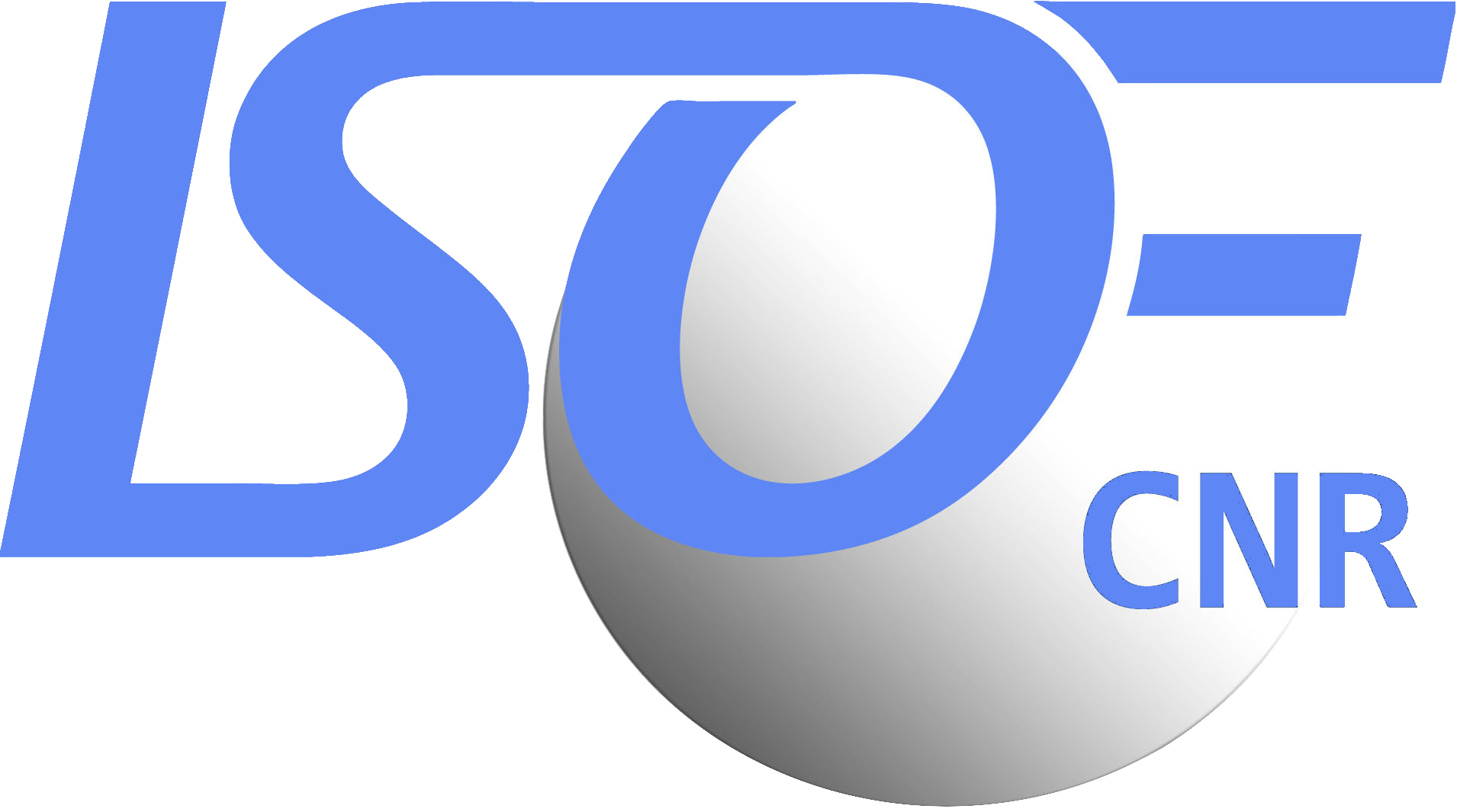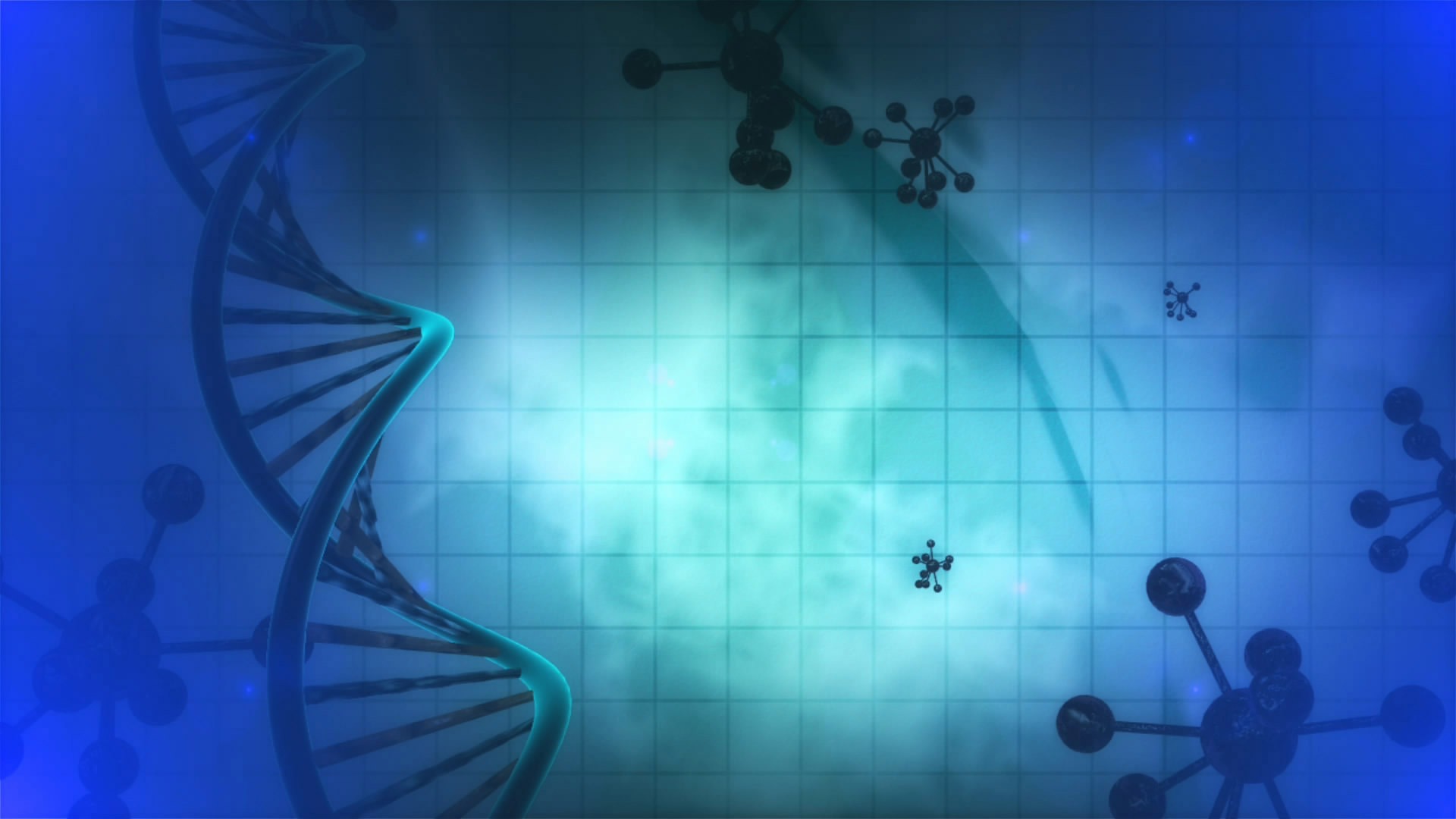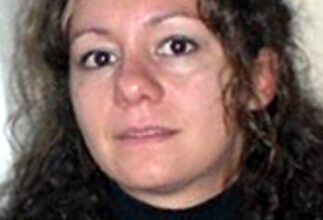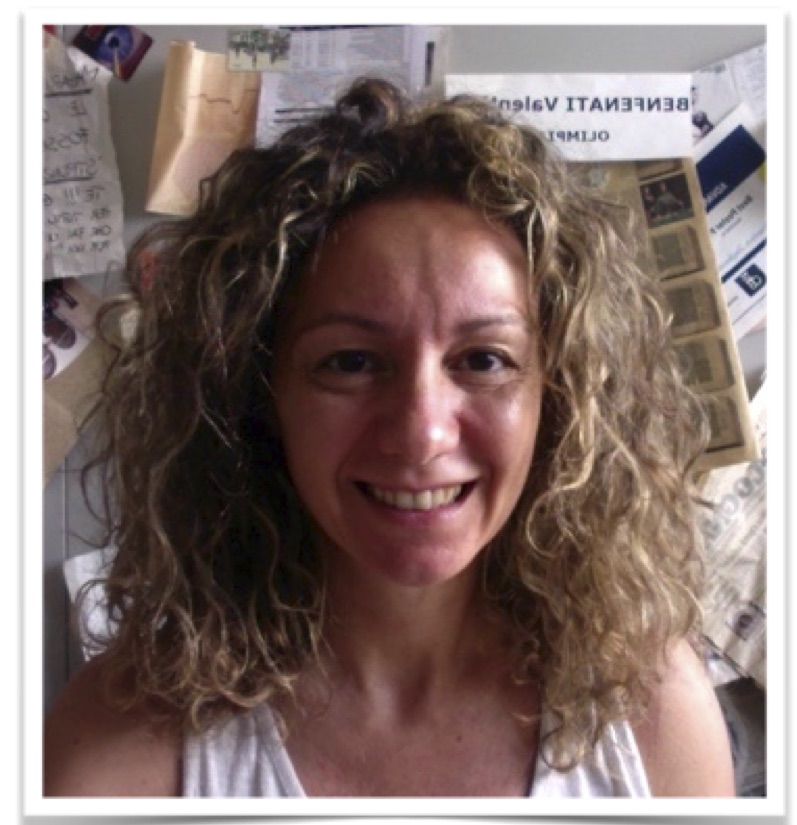
Senior Researcher
email: valentina.benfenati @isof.cnr.it
Office telephone: +39 051 639 9786
Building: Isof 4 – Floor: 2
Office number: 427
Dr Benfenati is a pharmacyst, her background is in Neuroscience, Electrophysiology, Neural cell physiology, Ion channel Biophysics, Glial cell physiology. Since 2010 she is coordinating a group working on innovative ad-hoc tailored materials and device platform (bioelectronic and bio photonics) targeting neuroscience fundamental investigation and neurological applications (including neurophotonics, electronics and neuroregenerative medicine). The long term goal our studies is to unravel new mechanisms underpinning brain cell communication mechanisms, by using technologies that enable multiscale probing and control of neural cells function.
A specific aspect of pur research is the study of brain cells called astrocytes.
Astrocytes are the cells that in the brain are devoted to brain homeostasis, that they tighly regulate by membrane ion channels, water channels and receptors. Nonetheless over the past 20 years, it has been established that the classical neurocentric vision in uncomplete. Indeed, the information processes and cognitive function are not relying solely on neurons. With their endfeet astrocytes encompass and regulate synapse. Nonetheless, by intracellular Ca2+ oscillations and waves astrocytes can release neurotrnasmitters and they can sense and orchestrate the response to envitomental stimuli.
However, progress on understanding on astrocytes physiology were hampered by the use of technologies and approached that were developed and targeted to neurons.
To this end Dr Benfenati pioneered the concept of Glial Engineering and Interface to complement with neural interface, and she is validating the use of materials interface, electronic and photonic devices that enable to study of astrocytes with unpresented resolution and with multiscale approach (from nano, single channel, to cell up to sincytium and whole brain).
Dr Benfenati Coordinate and ideate “The ASTROTECH Project” H2020-MSCA-ITN Eu project.
The past four decades demonstrated that non-neuronal cells, called astrocytes are emerging as crucial players for brain function & dysfunction. A major obstacle of previous and current initiatives on Neurotechnologiesis a lack of focus on astrocytes and most of the tools used to probe and sense astrocytes are derived from those developed to study neurons. ASTROTECH will create and develop the field of Glial Engineering, to provide a consistent range of tools to record, study, and manipulate astrocytes in the healthy and diseased brain. ASTROTECH will train 15 Early Stage Researchers (ESRs) on research, training and complimentary skills aiming at: engineering biomaterials and nanostructured interfaces to provide in vivo-like in vitro models for controlled & reliable studies of astrocytes in vitro; fabrication and characterization of nanostructured devices for stimulation, recording and biosensing of astrocytes; optogenetics tools, optoelectronic device &photonic methods for precise and cell selective stimulation of astrocytes; computational approaches to describe and predict neuron-astrocytes interactions. The training on state-of-the-art biomaterials interfaces, electronic, photonic devices will be combined with in depth knowledge on optogenetics, neuroscience, glial physiology and biology and computational methods to validate the developed tools in vitro, ex vivo, in silico & in pathological models of glioma, ischemia, epilepsy and depression. The ASTROTECH network combines 11 beneficiaries and 14 partners belonging to 9 European and Non-EU countries Academia, Public Research Centers and industrial labs, that combines interdisciplinary, intersectoral and soft skills knowledges where the private sector is highly represented and covers every step “from benchside to bedside” of the value chain.
ASTROTECH will improve career perspectives of the next generation of scientists. Nonetheless, ASTROTECH will set the scene for novel tops to be used in neuroscience investigation as well for novel therapeutic approach for invalidating neuropathology’s such as ischemia, glioma, depression and epilepsy.
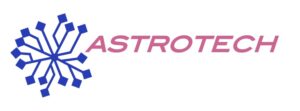

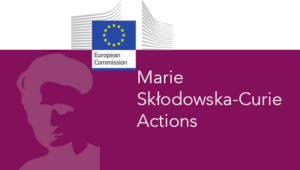
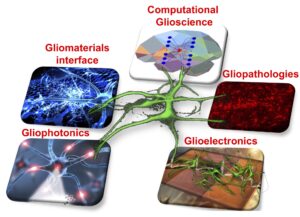
linkedin.com/in/astrotechproject-msca-574680208
https://cordis.europa.eu/project/id/956325/it
Scientific Achievements:
- She led the team defining the way to selectively modulate calcium signalling in astrocytes by coatings of GO and rGO electrodes (Fabbri et al., Nature Nanotechnology 2024)
- She defined slow oscillations in differentiated astrocytes in vitro:
https://onlinelibrary.wiley.com/doi/10.1002/adbi.202070044#.XqFx_L9ShqY.linkedin
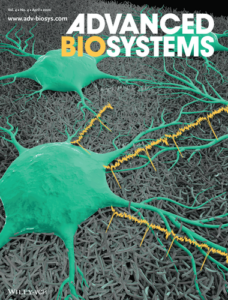
- She defined the ability of IR laser light to excite TRPV4 and TRPA1-mediated calcium signalling and water transport in astrocytes https://faseb.onlinelibrary.wiley.com/doi/full/10.1096/fj.201903049R
- She contribute to the development and validation of the first organic field effect transistor architecture capable to stimulate and record electrophysiological signals from primary neurons O-CST (Benfenati et al., Nat Mater, 2013; see pub list). Results from the work she is coordinating, in synergy with researcher at ISMN, are putting the basis for novel supradisciplinary field she called organic neuro-optoelectronic.
- She define mechanism beyon cell volume regulation in astrocytes 1) TRPV4 in astrocytes 2) functional and molecular interaction between aquaporins and ion channels among which AQP4 and TRPV4, AQP4 and VRAC. (Benfenati et al., PNAS 2011; Benfenati et al., J Neurochem, 2007; Formaggio et al., Faseb J; 2019, Mola et al., Cell Phys and Biochem 2021).
- She was leading in collaboration with researcher at ISOF, ISMN and IBIMET, an internationally recognized expertise on the silk fibroin. They were able to established in loco at CNR Research Area the entire silk fibroin chain from production of raw-material to assessment for upscaled extraction/purification methodology, to fabrication of tailored biophotonic substrates, nanocomposites and novel multifunctional biomaterials targeted to biophotonic and neuroregenerative medicine.
Research Support
Ongoing Research Support
1)GA 956325- H2020-MSCA-ITN-2020 (European Commision) “ASTROTECH”- 11/01/20 – 10/30/25. This proposal seeks to develop and validate new technologies to study astrocytes. The consortium includes 11 beneficiaries from EU and non-EU countries. Role – Coordinator- project budget [b]apex 4 MLN euros.
2)Army Cooperative Agreement # W911NF-24-2-0074, ASTRO-CLUSTER, 450 K $.[b]This proposal seeks to uncover and define the effects and the use of gold-nanoclusers to probe and sense astrocytes and neuron function at the nanoscale[/b]
3)Air Force Office of Scientific Research, FA9550-25-1-0001 ( 10/15/24 –10/14/28 “ASTROSENSE”- This proposal seeks to uncover and define the effects of chemomechanical clues on astrocytes function. Role – Coordinator- project budget [b]600K$[/b]
4)Air Force Office of Scientific Research, FA9550-23-1-0286 ( 09/30/23 – 09/29/26 “ASTROTALK”- This proposal seeks to evaluate the use of stimulation to modulate astrocytes-neurone communication Role – Coordinator- project budget [b]714K$[/b]
5) Air Force Office of Scientific Research-ICARUS (Co-PI) is proposal seeks to record extracellular voltage from astrocytes-neurone population
Completed Research Support
1) Air Force Office of Scientific Research, FA9550-20-1-0386 (FA9550-20-1-0386) 09/30/20 – 09/29/23 “ASTROLIGHT”- This proposal seeks to uncover and define the effects of light sources on astrocytes function. Role – Coordinator- project budget [b]375K$[/b]
2) Air Force Office of Scientific Research, FA9550-16-1-0502 (AFOSR) 09/01/19 – 08/30/21 Decoding astrocyte natural rhythms. Role:Co-PI with Prof Wolfgang Losert as PI- project budget [b]250K $[/b]
3) Air Force Office of Scientific Research, FA9550-17-1-0502 (AFOSR) 02/01/17 – 01/31/21 “Shedding light on brain microdomains [b]– ASTRONIR.” Role – Principal Investigator- project budget 225K $[/b]
4)Air Force Office of Scientific Research, FA 18RT0176 (AFOSR) 08/1/18 – 07/31/22 Three Dimensional Brain in Vitro Models via Electrofluidodynamics – 3D NEUROGLIA. Role – Co-Principal Investigator with Dr V. Guarino as PI project budget [b]150 K$[/b]
5) Research contracts between CNR-ISOF and MISTER Smart Innovation Emilia Romagna Region Lab. (MAT2REP: 2019-2021) project budget Apex [b]1MLN euros[/b]
6)FA9550-16-1-0502 (Air Force Office of Scientific Research – AFOSR),10/01/16 – 09/30/18,– ASTROMAT-Role: Principal Investigator. project budget [b]50K $[/b]
7) European Training Network OLIMPIA (EU-Comm), FP7-PEOPLE-2012-ITN-316832 (Co-PI, Dr Muccini was PI), 10/01/12 – 09/30/16. project budget apex 4 MLN euros
8)MIUR – Italian Flagship Project Fabric of the Future, (FdF), (MIUR) Benfenati (PI), 01/15/13-12/6/17. SILK.IT. project budget [b]197K euros[/b]
9)MIUR – FIRB Future in Research (MIUR) RBFR12SJA8-002 (Co-PI, Dr Nicchia was PI) 03/21/13-03/21/17. Study of the pathophysiological role of D184E mutation in Aquaporin-4 gene. project budget [b]684 K euros[/b]
10) Research contracts between CNR-ISOF and MIST-ER Emilia Romagna Region Lab. (SAMBA: 2016-2018, MAT2REP: 2019-2021) project budget Apex [b]1MLN euros[/b]
11) FIRB RBPR05JH2P Rete Italnanonet, Scientific Responsible of Unit of Bologna – Node Bologna-Pisa. Project budget Apex 7MLN euros
Positions and Honours
- 2019: Senior Researcher at CNR-ISOF
- 2017-Permanent Researcher at CNR-ISOF
- 2012-2017 Researcher (non permanent) at CNR-ISOF
- 2014-2019 Adjunct Professor of Physiology , University of Bologna, Biomedical Engineering Course.
- She is Responsible of Laboratory for Biology at CNR-ISOF and laboratory for bioorganic and hybrid interface at CNR-ISMN. She is coordinating research activities of 3 phD student 2 research collaborator and 1 Post-doc.· 2012-today: Senior Researcher at CNR-ISOF. Team-Leader.
- 2012 to present: Coordinator of scientific activity (Area 2.1) Laboratory MIST ER, Laboratory of Micro and Submicro Enabling technologies for Emilia Romagna. Laboratory of Industrial Research and Technology Transfer of High Technology Network of Emilia-Romagna. Area 2.1: Materials and optoelectronic devices biocompatible and biofunctional for biodiagnostic in-vitro and in-vivo and bio-manufacturing. (BIOMED). Develop research activities with industrial address to get biomimetic functional materials and devices are made capable of enabling applications in biodiagnostic and bio-manufacturing. The devices are mainly biosensors for recording, stimulation and modulation of electrophysiological signals of neuronal cells. She is also working for development and testing functionalization approaches for bioaterials of biomedical interest
- 2010-2012: Researcher at CNR-ISMN, home to Bologna, Department of Chemistry and Technology of Materials. Responsible for scientific and research activities of the laboratory for bio-electronics and bio-organic interfaces. Coordinates, as team leader, the research activities of the laboratory for bio-electronics and bio-organic interfaces.
- 2009: Guest researcher, 1 month as a visiting researcher for a specified period at Centre of Excellence in Molecular Biology and Neuroscience, University of Oslo, Oslo, Norway. Coordinates the study of interactions of ion channels with astro glial aquaporins expressed in the brain.
- 2008-2010: Research Fellow at CNR-ISMN Bologna office, Department of Chemistry and Technology of Materials. Supervisor Dr. Michele Muccini. She works as head of the research laboratory for bio-electronics and bio-organic interfaces. The work addresses the engineering and validation of advanced materials and biomedical devices that analyze and modulate the electrophysiological properties and membrane channels involved in the homeostasis astro glial and neuronal physiology.
- 2008: Wins a Scholarship Programme Marco Polo (University of Bologna), in support of a stint as a post-doc at Institute of Experimental Medicine, University of Prague, supervisor Dr. Anderova and Prof Verkhratsky. Autonomously develops a research project on the study of ion channels in the homeostatic regulation astroglial their modulation in situ.
- 2007: Wins a scholarship from the European Molecular Biology Organization (EMBO) Short-Term Fellowship Grant and a scholarship Marco Polo Fellowship Program travel grant award (University of Bologna), to work as a post-doc in the lab of Prof Ole Petter Ottersen in collaraborazione with Prof Amiry-Moghaddam, at Centre of the Centre of Excellence in Molecular Biology and Neuroscience (CMBN), University of Oslo, Oslo, Norway. Develops and contributes to the coordination of the project “TRPV4 and AQP4 molecular complex in astroglial brain volume regulation”.
- 2007: Winner of “International Brain Research Organization (IBRO) Travel Grant” in support of his participation in “VIII Meeting on Glial Cells Euopean in Health and Disease”, London, UK.
- 2005-2008: Winner of a scholarship MIUR (FIRB funds of 2001) and a post-doctoral fellowship at the University of Bologna, at the Lab. Of Cellular Physiology Prof. Stefano Ferroni, to develop the research project “effects modulators of neurotrophins on glial cells “and the project” analysis of the molecular mechanisms and functional in the homeostatic regulation of astroglial cell volume: physiological and pathophysiological “
- 2006: PhD in Cellular Physiology and NeuroimmunoPhysiology, University of Siena. Thesis title: Guanosine promotes the upregulation of an inward rectifier potassium current in cultured rat cortical astrocytes. Coordinator Prof Pessina, tutor Prof. Ferroni.
- 2005: Winner of a scholarship Marie Curie Host Fellowships for spending a period of work at the laboratory of Professor Ole Petter Ottersen in collaraborazione with Prof Amiry-Moghaddam, at Centre of the Centre of Excellence in Molecular Biology and Neuroscience (CMBN) University of Oslo, Oslo, Norway. Formed his research experience in characterization techniques immunological in vitro and in situ as Immunogold electron microscopy (IEM) Confocal Microscopy in situ develops the project “role in the pathophysiology of the channel AQP4 brain.” She develops independently the project “Identification of brain osmosensor complex: molecular mechanisms regulating cell volume in astroglial cells “, using immunoblotting techniques, co-immunoprecipitation, confocal and electron microscopy in situ. Coordinates the research activities of Dr. Melania Dovizio at CMBN.
- 2004: plays an internship at the Lab. Of Prof. Antonio Frigeri, (CEGBA), University of Bari, and Dr. Paola Nicchia theory and practice to acquire the technology of siRNA.
- 2002-2006: Winner of post doctoral fellowship at the University of Siena. Home to Work: Lab of Cellular Physiology, Dept. of Human and General Physiology, University of Bologna, tutor: Prof Stefano Ferroni. Forms the basis of his research, acquiring and developing theoretical and practical aspects concerning the molecular and functional analysis of membrane proteins. In particular, he developed a solid experience of research in neurobiology and neurophysiology cell, with reference to the study of molecules that modulate the functional activity of neural cells. Acquires the following techniques: primary neuronal cultures and secondary; functional analysis of membrane proteins: patch clamp, calcium imaging; Molecular analysis of protein and gene expression: RT-PCR, ELISA, electrophoresis and western blot, immunofluorescence.
- 2000-2002: graduating student at Lab of Cellular Physiology, Dept. of Human and General Physiology, University of Bologna, tutor: Prof Stefano Ferroni and Prof Carmela Rapisada
Collaborations (out of CNRs)
Research Institutions and Universities:
– University of Bologna, Dept of Biotechnology and Pharmacy (UNIBO)
– University of Bari (UNIBA) (Prof GP Nicchia,, Prof Frigeri, Prof Maria Svelto)
– Centre for Molecular Biology and Neuroscience (CMBN) (Prof Mahmood Amiry-Moghaddam, Prof Ole Petter Ottersen)
– Ecole Nationale Superieure ded Mines de Saint Etienne (EMSE) (Prof George Malliaras)
– Italian Institute of Technology (IIT)- POLIMI (Prof Guglielmo Lanzani, Maria Rosa Antognazza)
– Italian Institute of Technology (IIT)- NBT (Michela Chiappalone, Fabio Benfenati)
– University of the Basque Country (UPV-EHU) (Prof David Mecerreyes)
– Technische Universitat Munchen (TUM) (Prof Paolo Lugli)
-Extra EU partners
Prof Anita Mahadaven-Jansen, Vanderbitl University
Prof Mark Hutchinson, CNBP, University od Adelaide
Prof Wolfgang Losert, University of Maryland
Dr Saber Hussein, AFRL, Dayton
Dr Shashi Karna, ARL,
Prof Theodore Gooodson III, University of Michigan
Prof Michelle Sander, Boston University
Private Partners:
– ETC srl (Italy)
– Histocell (Spain)
Publications:
-
- Maiolo L, Guarino V, Saracino E, Convertino A, Melucci M, Muccini M, Ambrosio L, Zamboni R, Benfenati V. Glial Interfaces: Advanced Materials and Devices to Uncover the Role of Astroglial Cells in Brain Function and Dysfunction. Adv Healthc Mater. 2020 Oct 26:e2001268. doi: 10.1002/adhm.202001268.
- Saracino E, Cirillo V, Marrese M, Guarino V, Benfenati V, Zamboni R, Ambrosio L. Structural and functional properties of astrocytes on PCL based electrospun fibres. Mater Sci Eng C Mater Biol Appl. 2021 Jan;118:111363. doi: 10.1016/j.msec.2020.111363.
- Borrachero-Conejo AI, Adams WR, Saracino E, Mola MG, Wang M, Posati T, Formaggio F, De Bellis M, Frigeri A, Caprini M, Hutchinson MR, Muccini M, Zamboni R, Nicchia GP, Mahadevan-Jansen A, Benfenati V. Stimulation of water and calcium dynamics in astrocytes with pulsed infrared light. FASEB J. 2020 May;34(5):6539-6553. doi: 10.1096/fj.201903049R.
- Saracino E, Maiolo L, Polese D, Semprini M, Borrachero-Conejo AI, Gasparetto J, Murtagh S, Sola M, Tomasi L, Valle F, Pazzini L, Formaggio F, Chiappalone M, Hussain S, Caprini M, Muccini M, Ambrosio L, Fortunato G, Zamboni R, Convertino A, Benfenati V. A Glial-Silicon Nanowire Electrode Junction Enabling Differentiation and Noninvasive Recording of Slow Oscillations from Primary Astrocytes. Adv Biosyst. 2020 Apr;4(4):e1900264. doi: 10.1002/adbi.201900264.
- Durso, M., Borrachero-Conejo, A.I., Bettini, C., Treossi E., ScidàA., Gazzano M., Christian M., Morandi V., Benfenati V., Melucci, M., Palermo, V. Biomimetic graphene for enhanced interaction with the external membrane of astrocytes. Journal of Materials Chemistry B. 6(33), pp. 5335-53. Journal Cover.
- Formaggio F, Saracino E, Mola MG, Rao SB, Amiry-Moghaddam M, Muccini M, Zamboni R, Nicchia GP, Caprini M, Benfenati V*. LRRC8A is essential for swelling-activated chloride current and for regulatory volume decrease in astrocytes. FASEB J. 2019Jan;33(1):101-113. doi: 10.1096/fj.201701397RR
- Guarino V., Benfenati V., Cruz Maya I., M., Saracino E., Zamboni R., Ambrosio L. Natural proteins for 3D scaffolds in tissue engineering. book chapter. Elsevier, 2018. in press DOI:10.1016/B978-0-08-100979-6.00002-1
- Guarino V. Benfenati V., Cruz Maya I., Borrachero-Conejo A.I., Zamboni R., Ambrosio L. Bioinspired scaffolds for bone and neural tissue engineering. book chapter. Elsevier, 2018. in press doi.org/10.1016/B978-0-08-100979-6.00003-3.
- Pistone A., Sagnella A., Chieco C., Posati T.,Varchi G., Formaggio F.,Bertazza G., Saracino E.; Caprini M., Bonetti S. Toffanin S., Divirgilio N.; Muccini M., Rossi F.; Ruani G., Zamboni, R., Benfenati V.* Silk fibroin film from Golden-Yellow Bombyx mori is a biocomposite that contains lutein and promotes axonal growth of primary neurons. Biopolymers 2016, 105:287-99.
- Posati T., Sagnella A., Pistone A., Bonetti S., Donnadio A., Saracino E., M. Nocchetti, Dionigi C., G. Ruani, M. Muccini, Benfenati V. *, Zamboni R. Effect of different fabrication methods on the chemo-physical properties of silk fibroin films and on their interaction with neural cells. RSC ADV 2016,6, 9304-9314.
- Benfenati V. * ¶, Ferroni S. Microdynamics of Water and Ion Homeostasis in the Brain. Role of Aquaporins and Ion Channels of Astroglial Cells In: Boison D, Masino SA, eds. Homeostatic control of brain function. First Edition. Oxford University Press 2015; pg 3-40, DOI: 10.1093/med/9780199322299.003.0001
- Sagnella A., Zambianchi M., Durso M., Posati T., Del Rio A., Donnadio A., Mazzanti A., Pistone A., Ruani G., Zamboni R., Benfenati V*. and Melucci M. APTES mediated modular modification of regenerated silk fibroin in a water solution RSC Adv., 2015,5, 63401-63406
- Rapozzi V, Ragno D, Guerrini A, Ferroni C, Pietra ED, Cesselli D, Castoria G, Di Donato M, Saracino E, Benfenati V, Varchi G. Androgen Receptor Targeted Conjugate for Bimodal Photodynamic Therapy of Prostate Cancer in Vitro. Bioconjug Chem. 2015 26:1662-1671
- Bonetti S, Pistone A, Brucale M, Karges S, Favaretto L, Zambianchi M, Posati T, Sagnella A, Caprini M, Toffanin S, Zamboni R, Camaioni N, Muccini M, Melucci M, Benfenati V*. A lysinated thiophene-based semiconductor as a multifunctional neural bioorganic interface. Adv Healthc Mater. 2015, 4: 1190-1202. Journal Cover.
- Alberga D, Nicolotti O, Lattanzi G, Nicchia GP, Frigeri A, Pisani F, Benfenati V, Mangiatordi GF. A new gating site in human aquaporin-4: Insights from molecular dynamics simulations. Biochim Biophys Acta. 2014, 1838: 3052-3060.
- Cavallini S., Toffanin S., Chieco C., Sagnella A., Pistone A., Posati T, Benfenati V*, Natali M, Di Virgilio M., Ruani G., Muccini M., Zamboni R. and Rossi F., Naturally Functionalized Silk as Useful Material for Photonic Applications. Composite Part B 2015, 71, 152–158.
- Sagnella A., Chieco C., Di Virgilio N., Toffanin S., Cavallini S., Posati T., Pistone A., Varchi G., Muccini M., Ruani G., Benfenati* V., Zamboni R. and Rossi F. Silk.it Project: Silk Italian Technology for Industrial Biomanufacturing. Composite part B: Engineering, 2015, 68, 281-287
- Prosa M., Sagnella A., Posati T., Tessarolo M., Bolognesi M., Posati T., Toffanin S., Cavallini S, Benfenati* V., Seri M., Ruani G., Muccini M., and Zamboni R. Integration of a silk fibroin based film as luminescent down-shifting layer in ITO-free organic solar cells. RSC Adv., 2014, 4, 44815-44822.
- Sagnella A., Chieco C., Di Virgilio N., Toffanin S., Posati T., Pistone A., Bonetti S., Muccini M., Ruani G., Benfenati* V., Rossi F. and Zamboni R. Bio-doping of regenerated silk fibroin solution and films: a green route for biomanufacturing. RSC Adv., 2014,4, 33687-33694.
- Posati T, Melucci M, Benfenati V.*, Durso V., Nocchetti M, Cavallini S., Toffanin S., Sagnella A, Pistone A., Muccini M., Ruani G and Zamboni R. Selective MW-assisted surface chemical tailoring of hydrotalcites for fluorescent and biocompatible nanocomposites RSC Adv., 2014,4, 11840-11847.
- Posati T., Benfenati V.*, Sagnella A., Pistone A., Nocchetti M., Donnadio A., Ruani, G. Zamboni R., Muccini M. Innovative Multifunctional Silk Fibroin and Hydrotalcite Nanocomposites: a Synergic Effect of the Components. Biomacromolecules, 2014, 158-168.
- Benfenati V*¶, Martino N, Antognazza MR, Pistone A, Toffanin S, Ferroni S, Lanzani G, Muccini M. Photostimulation of Whole-Cell Conductance in Primary Rat Neocortical Astrocytes Mediated by Organic Semiconducting Thin Films. Adv Healthc Mater. 2014, 3, 392-399.
- Dionigi C., Posati T., Benfenati V.* , Sagnella A., Pistone A., Bonetti S., Ruani, G. Dinelli F., Padeletti G., Zamboni R., Muccini M. A nanostructured conductive bio-composite of silk fibroin/single walled carbon nano tube. J. Mater Chem B, 2014, 10, 1424-1431.
- Benfenati V*¶, Toffanin S, Bonetti S, Turatti G, Pistone A, Chiappalone M, Sagnella A, Stefani A, Generali G, Ruani G, Saguatti D, Zamboni R, Muccini M. A transparent organic transistor for bidirectional stimulation and recording of primary neurons. Nature Materials, 2013,12, 672.
- Toffanin S, Benfenati V*¶, Pistone A, Bonetti S., Koopman W, Posati S, Sagnella, A, Ruani G, Zamboni R., Muccini M. N-type perylene-based organic semiconductors for functional neural interfacing. Journal of Material Chemistry B, 2013, 1, 31, 3850. [IF = 6.1]
- Varchi G, Benfenati V, Pistone A, Ballestri M, Sotgiu G, Guerrini A, Dambruoso P, Liscio A, Ventura B. Core-shell poly-methylmethacrylate nanoparticles as effective carriers of electrostatically loaded anionic porphyrin. Photochem Photobiol Sci. 2013.
- Bolognesi M, Tessarolo M, Posati T, Nocchetti M , Benfenati V, Seri M, Ruani G, Muccini M. Efficiency enhancement of P3HT:PCBM solar cells containing scattering Zn-Al hydrotalcite nanoparticles in the PEDOT:PSS layer. Organic Photonics and Photovoltaics, 1, 1, 2013.
- Benfenati V*¶, Stahl K, Gomis-Perez C; Toffanin S; Sagnella A; Torp, R; Kaplan DL; Ruani G; Omenetto FG; Zamboni, R; Muccini, M. Biofunctional silk/neuron interfaces, Advanced Functional Materials, 2012, 22, 1871. Journal Cover.
- Butenko O, Dzamba D, Prajerova I , Benesova J, Honsa P, Benfenati V, Ferroni S, Anderova M. The increased activity of TRPV4 channel in the astrocytes of the adult rat hippocampus after cerebral hypoxia/ischemia. PLoS One. 2012;7(6):e39959.
- Monasterolo C, Ballestri M, Sotgiu G, Guerrini A, Dambruoso P, Sparnacci K, Laus M, De Cesare M, Pistone A, Beretta GL, Zunino F, Benfenati V, Varchi G. Sulfonates-PMMA nanoparticles conjugates: a versatile system for multimodal application. Bioorg Med Chem. 2012, 20: 6640-6647.
- Benfenati V*, Caprini M, Dovizio M, Mylonakou MN, Ferroni S, Ottersen OP, Amiry-Moghaddam M. An aquaporin-4/transient receptor potential vanilloid 4 (AQP4/TRPV4) complex is essential for cell-volume control in astrocytes. PNAS, 2011, 108(6):2563-8. Edited by Prof. Peter Agre, Nobel Prize in Chemistry.
- Benfenati V*¶, Toffanin S, Capelli R, Camassa LM, Ferroni S, Kaplan DL, Omenetto FG, Muccini M, Zamboni R. A – platform that enables electrophysiology and targeted drug delivery in brain astroglial cells. Biomaterials, 2010, 31, 7883
- Capelli R, Amsden JJ, Generali G, Toffanin S, Benfenati V, Muccini M, Kaplan DL, Omenetto FG, Zamboni R.Integration of silk protein in organic and light-emitting transistors. Organic Electronics, 2011, 12, 1146
- Toffanin, S., Kim, S., Cavallini, S.,Natali, M., Benfenati, V; Amsden, JJ; Kaplan, DL; Zamboni R, Muccini M, Omenetto FG. Low-threshold blue lasing from silk fibroin thin films. Applied Physics Letters, 2011, 101, 091110
- Benfenati V*¶, Sagnella A, Chieco C, Di Virgilio N, Muccini M, Zamboni R, Rossi F. Silk fibroin as platform for neural cells and hybrid optoelectronics. Journal of Biobased Materials and Bioenergy, 2012, 6, 508
- Benfenati V*¶, Ferroni S. Water transport between CNS compartments: functional and molecular interactions between aquaporins and ion channels. Neuroscience, 2010, 168, 926 [IF = 3.122]. Invited review.
- Melucci, M; Durso, M; Favaretto, L; Capobianco, ML; Benfenati, V*; Sagnella, A; Ruani, G; Muccini, M; Zamboni, R ; Fattori, V; Camaioni, N Silk doped with a bio-modified dye as a viable platform for eco-friendly luminescent solar concentrators. RSC Advance 2012, 2, 8610.
- Benfenati V¶, Caprini M, Nicchia GP, Rossi A, Dovizio M, Cervetto C, Nobile M, Ferroni S. Carbenoxolone Inhibits Volume-regulated Anion Conductance in Cultured Rat Cortical Astroglia. Channels (Austin), 2009, 3, 323.
- Vignali M, Benfenati V, Caprini M, Anderova M, Nobile M, Ferroni S. The endocannabinoid anandamide inhibits potassium conductance in rat cortical astrocytes. Glia, 2009, 57, 791
- Benfenati V¶, Amiry-Moghaddam M, Caprini M, Mylonakou MN, Rapisarda C,Ottersen OP, Ferroni S. Expression and functional characterization of transient receptor potential vanilloid-related channel 4 (TRPV4) in rat cortical astrocytes. Neuroscience. 2007, 148, 876 [IF = 3.122].
- Benfenati V¶, Nicchia GP, Svelto M, Rapisarda C, Frigeri A, Ferroni S. Functional down-regulation of volume-regulated anion channels in AQP4 knockdown cultured rat cortical astrocytes. J. Neurochemistry 2007 100(1):87-104.
- Benfenati V¶, Caprini M, Nobile M, Rapisarda C, Ferroni S. Guanosine promotes the up-regulation of inward rectifier potassium current mediated by Kir4.1 in cultured rat cortical astrocytes. J. Neurochemistry 2006, 98, 430.
Other info:
The major objectives of my research group are
- To unravel new mechanisms underpinning brain cell communication mechanisms
- To exploit bio-functionalities of innovative ad-hoc tailored materials and device platform (bioelectronic and bio photonics) in to monitor and modulate physiological parameters of neural cells (neurons and astrocytes)
- To define bio-activity (in terms of gene, protein molecular and functional expression) of novel synthesized small molecules, drugs, nanodelivery systems, advanced multifunctional materials, biophotonic systems, on membrane water and ion channels which are essential for the biology and physiology of primary brain cells
Our mission is to create effective tools for biomedical research biotechnologies and neuroregenerative medicine by contributing to engineering, fabrication and characterization of innovative device based organic biomaterials and field-effect transistor architecture or biophotonics structures that could provide cell/device bidirectional communication with excitable and non-excitable cells of the CNS. Over the past ten years we defined biofunctional and bioactive properties of carbon based, inorganic and hybrid materials platforms deriving from natural or synthetic origin such as silk fibroin, organic semiconductors and lamellar nanoparticles and graphene by state of the art technologies in cellular biology molecular biology and cellular physiology.
The multidisciplinary nature of the topics developed relies on competence of the broad team of researcher involved in the topic that regards on cell and system physiology, neuroscience, neurobiology, chemistry, materials science, device physics, photonics. The different research topics are developed in straight synergy with researchers from other Institutes of the DCSTM and of other Department of CNR as well as with Universities of the Italian Research ecosystem.
The research and innovation beyond the work is supported by the participation and coordination of national and international and transcontinental projects and related collaborations (see ongoing and completed research support). Among the other the support from Air Force Office of Scientific Research and the policy of the US-Italy JS&T commission were essential to seed the research community at international level. The most recent achievement is the EU-Horizon-2020 MSCA ASTROTECH project (www.astrotechproject.eu).
Bio-Labs-Facilities [Joint Laboratories at ISOF-Bo ISMN-Bo, Lab Responsible: Valentina Benfenati]
Labs have all the facilities need for the preparation, maintenance and monitoring of cell culture (primary and secondary). In particular, instruments such as Cell culture incubator, Laminar hood, Optical and Fluorescent Microscopes are present. The lab is also equipped with Autoclave for sterilization and liquid nitrogen Duar for cell storage. The lab is equipped with Varioskan (Thermo scientific) microplate reader enabling high-throughput assays for cell viability (citotoxicity), injector for HTS drug testing for calcium signalling, apoptosis and cell death, ELISA based assays. Fluo SPIN UP Criesel
The lab is also fully equipped for cellular and molecular biology, protein and cell analyses. BIORAD Real Time PCR, Chemidoc Imaging system, Miniprotean-System, High speed Refrigerated Centrifuge, Microbiology incubator.
Patch-clamp set-up for intracellular stimulation recording and MEA System (microelectrode array) for extracellular stimulation and recording are present in the lab. Finally, the patch-clamp set-up is integrated with instruments for microfluorimetric monitoring of dynamic variation of intracellular calcium (calcium imaging).
